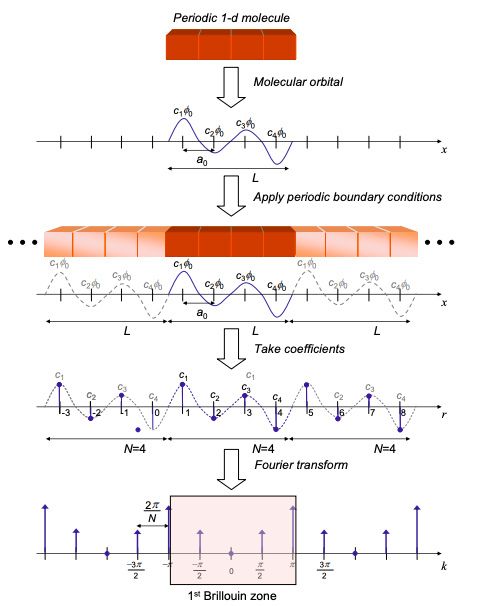6.15: The first Brillouin zone
- Page ID
- 52348
Since there are only N distinct values of the coefficients (corresponding to one period of the Fourier transform), we typically restrict k to the N values in the range \(-N/2 < n \leq N/2\), i.e.
\[ -\frac{\pi}{a_{0}} < k \leq \frac{\pi}{a_{0}} . \nonumber \]
This is known as the first Brillouin zone. Other values of k are either not permitted by periodic boundary conditions, or \(c(x)=\text{exp}[ikx]\) reduces to one of the N solutions. For example, consider \(k = 2\pi (n+N)/L\):
\[ c(x) = e^{i\frac{2\pi (n+N)}{L}x} = e^{i\frac{2\pi (n+N)}{Na_{0}}ra_{0}} = e^{i\frac{2\pi n}{N}r+i2\pi r} e^{i\frac{2\pi n}{N}r} = e^{i\frac{2\pi n}{L}x} \nonumber \]
where \(a_{0}\) is the spacing between unit cells.


